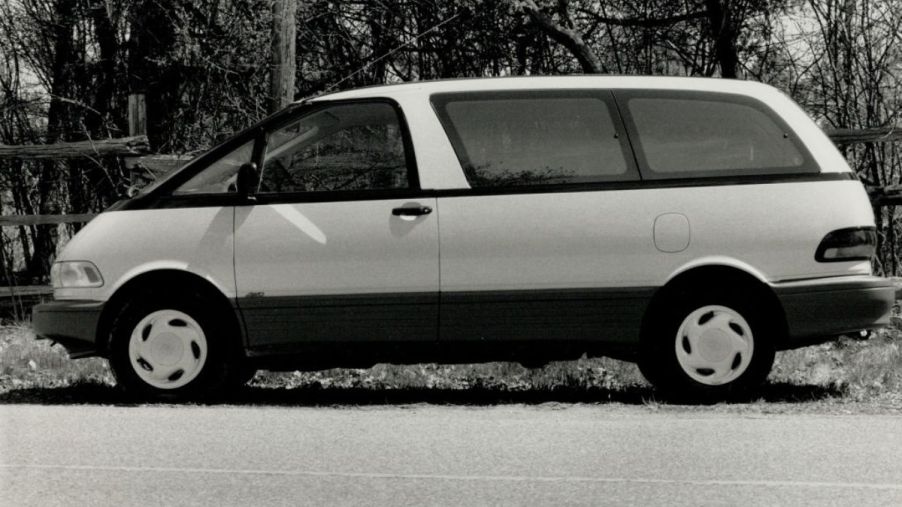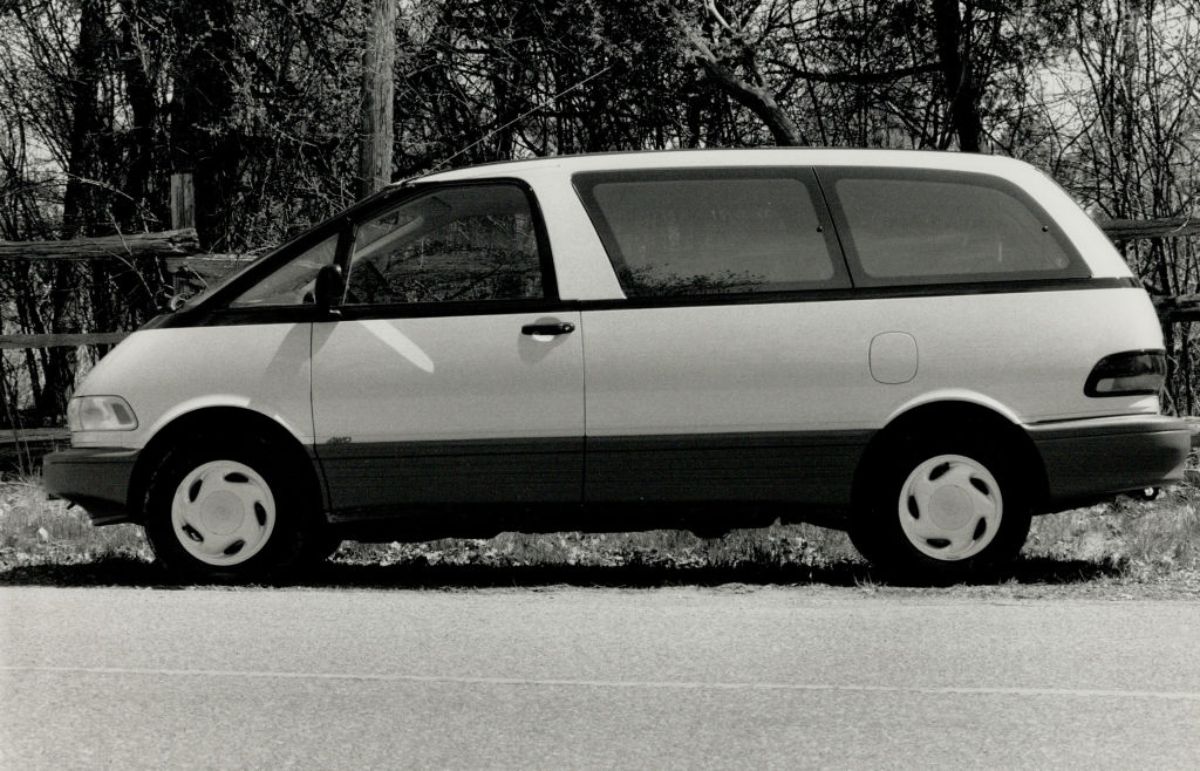
What Does the Name Previa Stand for in the Toyota Previa
Toyota’s first major leap into the modern minivan market was unconventional and unique, to say the least. With the Dodge Caravan and Plymouth Voyager setting the standard for the modern minivan, many companies scrambled to market their version with a unique twist.
GM introduced their infamous “dustbuster minivans” to wild acclaim by offering unique, cutting-edge styling in the Oldsmobile Silhouette, Pontiac Trans Sport, and Chevrolet Lumina MPV. Ford similarly went for a wind tunnel-inspired design with the Ford Aerostar. Toyota took these sleek designs to the next level by offering the Toyota Previa; marrying modern design with a modern mid-engine drivetrain.

A mid-engine minivan?
Yes, the Toyota Previa was produced as a mid-engine minivan with its inception during the 1991 model year for North America. This was a true mid-engine design, with the engine mainly sitting below the front seats.
This allowed for a more balanced drive compared to the front-wheel drive Caravan competition, which tended to understeer in high-speed situations. Toyota also marketed this mid-engine design as a convenience feature, with easy access to spark plugs and other maintenance items in the engine.
Car and Driver reports that Toyota set out to make the Previa the “sports car of minivans”, and in doing so, made a minivan with a near 50/50 weight distribution. This Previa was produced with a 2.4L 2TZ-FE four-cylinder engine, producing a solid 138 horsepower.
There was also a supercharged version of the 2.4L four-cylinder which produced around 161 horsepower. Both of these engines were paired with either a four-speed automatic or five-speed manual transmission.
Why did the Toyota Previa fail in the U.S.?
Toyota Previa’s production run in the U.S. ran from 1990 through 1997. While the Previa did sell around 50,000 units in its first few years of production, these numbers paled in comparison to the competition found with the Dodge Caravan. Dodge was selling nearly 600,000 Caravans annually throughout the late 1990s.
While the Previa never found long-term success in the U.S., it did find an audience overseas in Toyota’s home country of Japan, where the Previa continued sales until 2019, although it took on a different name. This model of Previa was only called a Previa in select markets including China and the Philippines, for Japan, this minivan was known as the Estima, and for Australia, it was called the Tarago.
How did the Toyota Previa get its name?
According to Toyota UK Magazine, the Toyota Previa got its name from the Italian word, ‘previdenza’, which means “providence” or “foresight”. The Previa lived up to its name with its forward-thinking mentality. Today, compact crossover SUVs are being produced with sports car-like performance and a ton of space-saving engineering, just like the Previa.
The Previa was a mid-engine, near perfectly balanced sports car with a 161 horsepower four-cylinder engine and a five-speed manual transmission. Unfortunately, its minivan exterior made it fly well under the radar. If you are looking to get behind the wheel of a vehicle that will last as a true quirky conversion piece with solid performance, look no further than the Toyota Previa!



